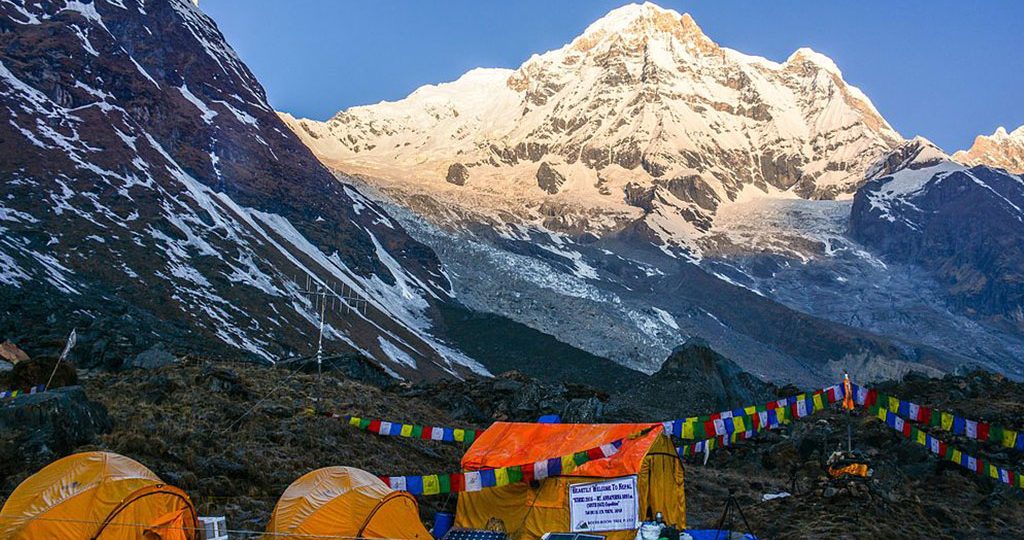Whether you are looking to take an active vacation or to experience the thrill of the mountainous adventure, the 7 Days Annapurna Base Camp Trek can give you the opportunity to explore the beautiful landscape of the Himalayas. This trip is a challenging experience and it requires the appropriate equipment, training and physical fitness. However, with proper planning and preparation, the trek will be a memorable and rewarding experience.
Timings
During the Annapurna Base Camp Trek, you will get a chance to see a wide variety of native flora and fauna. You will also have the opportunity to see some of the Himalayan ranges in the Annapurna Massif. The trek is perfect for those who want to experience a mountain hike with spectacular views.
The best time to visit the Annapurna Base Camp is during the autumn season, when the weather is mild. The region is known for its beautiful Himalayan scenery. There are several waterfalls and lush green jungle on the trek. There is also a hot water spring at Jhinu Danda.
The Annapurna Conservation Area is home to numerous animals, including 22 species of reptiles. The region also contains over 1,226 varieties of flowering plants. The trail around the Annapurna massif encircles deep river valleys and dense rhododendron forests.
The Annapurna Base Camp Trek offers spectacular views of the mountains, especially the snow-capped peaks. The trek is perfect for those who want a mild and less strenuous trekking experience.
Difficulty level
Whether you are a beginner or an experienced trekker, the difficulty level of 7 Days Annapurna Base Camp Trek is not impossible. All you need to do is to prepare yourself physically to enjoy this trek. Depending on the type of trekker, the fitness level and the distance walked on the trail will change the difficulty level of this trip.
A physically inactive person will have a very difficult time completing this trip. A novice trekker will take longer to reach the same distance as an experienced trekker. The difference in difficulty level is also affected by the weather conditions. The trek is more difficult in winter.
Altitude sickness is also a factor that may make the journey more difficult. It is caused by low oxygen levels and can lead to problems such as headache, nausea, vomiting, shortness of breath and loss of appetite. If you experience any of these symptoms, it is important to rest for some time and descend to a lower altitude.
Permits required
Getting the permits required for 7 Days Annapurna Base Camp Trek is a must for anyone who wants to trek in this region of Nepal. This region is known for its beauty and rich cultural heritage. It is home to many varieties of animals and plants.
There are a number of ways to obtain these permits. You can do it independently or through a travel agency. You can also do it in a group. It is advisable to go in a group for the safety of the trekkers.
There are two types of permits required for this trek. First, is the Annapurna Conservation Area Permit. This is only valid for one entrance. You can get the permit from the tourist board office in Pokhara. It costs 3000 rupees.
TIMS card is also needed. This permit is issued by the Nepal Tourism Board and it is a safety measure. It is a passport-like document that contains important information. You can check your TIMS card at any responsible authority.
Dangers
Whether you are trekking to Annapurna Base Camp or doing an Annapurna Circuit, you should always be aware of the dangers. Fortunately, there are a number of ways to prepare for your trip. Keeping in mind the weather, altitude, and climatic risks, you can better prepare yourself to go on your adventure.
The first thing to do is to choose the best season for your trek. In general, the spring is the best time for trekking in the Annapurna region. The weather is mild and warm, and you will find that wild flora blooms at this time. However, there are some risks associated with the spring season.
The monsoon season is from June through September. The rainy and muddy season can affect the safety of the trek, and it can also cause stranding.
The temperature is generally warmer during the day, but it can be cold at night. You will also want to pack some warm clothes. If you are planning on doing a two week trek, you will need to bring all the equipment that you will need. You may also want to hire porters, so that you can carry your backpack.
